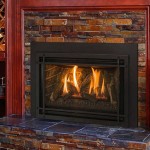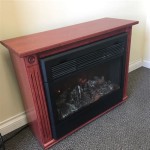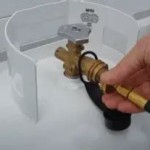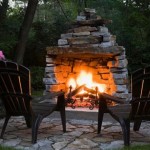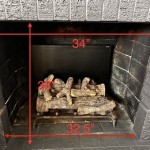What Kind of Paint Do You Use on a Brick Fireplace?
Painting a brick fireplace can dramatically alter the aesthetic of a living space, transforming a dated feature into a modern focal point or refreshing a tired appearance. However, achieving a long-lasting and visually appealing result requires careful consideration of the specific type of paint used. The inherent properties of brick, including its porosity and exposure to heat, necessitate a paint that can withstand demanding conditions while properly adhering to the surface. Choosing the wrong type of paint can lead to peeling, flaking, discoloration, and ultimately, a disappointing and costly outcome. Therefore, a thorough understanding of suitable paint options and their characteristics is crucial before embarking on this project.
The decision hinges on several factors, including the desired finish (matte, satin, semi-gloss), the fireplace's operational status (working or decorative), and the overall style of the room. Each type of paint possesses unique benefits and drawbacks, and selecting the optimal choice involves weighing these considerations to ensure the longevity and aesthetic compatibility of the painted surface. This article will explore the most appropriate paint types for brick fireplaces, detailing their properties, application methods, and suitability for various scenarios.
Understanding Brick Properties and Paint Requirements
Brick is a porous material, meaning it contains numerous tiny pores that can absorb moisture and other liquids. This characteristic affects how paint adheres to the surface and influences the type of paint that will perform best. When painting brick, the paint needs to be able to penetrate these pores and create a strong bond to prevent peeling or blistering. Furthermore, a working fireplace is exposed to significant heat fluctuations, particularly around the firebox. The paint used must be heat-resistant enough to withstand these temperature changes without degrading or releasing harmful fumes. Even a decorative fireplace can experience temperature changes from sunlight or ambient room heating. These properties inform the selection process for appropriate paint.
In addition to porosity and heat resistance, the paint must also be breathable. Breathability allows moisture that may be trapped within the brick to escape, preventing the paint from blistering or detaching. If moisture is trapped, especially in colder climates where freeze-thaw cycles occur, the expansion and contraction can severely damage both the paint and the brick itself. Therefore, permeability of the paint is an essential factor to consider for exterior brick as well, although this article mainly focuses on interior fireplaces. The type of brick also influences the choice. Some bricks are smoother than others, requiring different surface preparation and primer application techniques.
Finally, the location of the brick within or surrounding the firebox is a crucial variable. Brick directly exposed to flames needs a higher heat-resistant paint or specialized coating designed for such conditions. Brick further away from the immediate heat source has more options available, but still needs to be able to handle increases in temperature. The cleaning process and the type of cleaner used can also impact the success of the paint application. Harsh chemicals can damage the brick or leave residues that interfere with adhesion.
The Best Types of Paint for Brick Fireplaces
Several types of paint are suitable for brick fireplaces, each with its own advantages and disadvantages. The most commonly recommended options include latex paint, acrylic paint, and specialized masonry paints. Understanding the properties of each type will assist in selecting the best option for a particular project.
Latex Paint
Latex paint is a water-based option known for its ease of application, low odor, and quick drying time. It is a durable choice suitable for many interior applications, including brick fireplaces. Latex paint offers good breathability, allowing moisture to escape from the brick. This is particularly important for older fireplaces that may have accumulated moisture over time. Latex paint is also relatively easy to clean up with soap and water, making it a convenient option for DIY projects. However, latex paint is not as heat-resistant as some other options and may not be the best choice for brick surfaces directly adjacent to the firebox.
When using latex paint on brick, it is essential to use a high-quality primer specifically designed for masonry surfaces. The primer will help to seal the brick's pores, create a uniform surface for the paint to adhere to, and improve the paint's overall durability. Multiple coats of latex paint may be necessary to achieve the desired level of coverage and color saturation. Different sheens are also a consideration. Flat or matte finishes tend to hide imperfections better, while semi-gloss or gloss finishes are easier to clean but also highlight any irregularities in the brick surface. The choice depends on the desired aesthetic and the condition of the brick.
Another consideration with Latex paint is the type of binder used. There are different qualities of Latex paint. Higher quality paints will have more acrylic binders which will provide more durability and resistance to heat. Consider the quality of Latex paints before opting for that choice to ensure the longevity of the job.
Acrylic Paint
Acrylic paint is another water-based option that offers excellent adhesion, durability, and color retention. It is more resistant to cracking and peeling than latex paint and can withstand higher temperatures, making it a better choice for fireplaces that are used regularly. Acrylic paint also forms a more flexible film than latex paint, allowing it to expand and contract with the brick as it heats and cools. This flexibility helps to prevent the paint from cracking or flaking over time.
Like latex paint, acrylic paint requires a primer designed for masonry surfaces to ensure proper adhesion. Acrylic paint is available in a variety of sheens, allowing for a wide range of aesthetic options. It is also relatively easy to clean up with soap and water. One potential disadvantage of acrylic paint is that it can be more expensive than latex paint. However, the increased durability and longevity of acrylic paint may make it a worthwhile investment, especially for working fireplaces.
Using 100% acrylic paint on a brick fireplace is recommend over a blend. 100% acrylic paint offers the best weather resistance, flexibility, and adhesion compared to other acrylic blends. It forms a durable and long-lasting finish that can withstand significant temperature fluctuations. This ensures the paint doesn't crack, peel, or fade prematurely, especially around the firebox. Investing in 100% acrylic paint is therefore a worthwhile investment to maintaining the aesthetic value of the fireplace.
Specialized Masonry Paints
Specialized masonry paints are specifically formulated for use on brick, concrete, and other porous masonry surfaces. These paints typically contain a higher concentration of solids than standard latex or acrylic paints, providing better coverage and durability. They are also designed to be highly breathable, allowing moisture to escape from the brick while preventing water from penetrating the surface. Specialized masonry paints often contain additives that inhibit the growth of mold and mildew, which can be a concern in damp or humid environments.
One of the primary advantages of specialized masonry paints is their excellent adhesion to brick surfaces. They are formulated to penetrate the brick's pores and create a strong, lasting bond. Some masonry paints also offer enhanced heat resistance, making them suitable for use on working fireplaces. These paints are available in a variety of colors and finishes, allowing for a wide range of aesthetic options. However, specialized masonry paints can be more expensive than standard latex or acrylic paints, and they may require specialized application techniques.
Silicate paints, also falling under the category of masonry paints, create a strong chemical bond with the mineral substrate. By chemically reacting with the brick, they form a highly durable and breathable surface that is resistant to peeling, cracking, and fading. These paints allow moisture to escape from the brick and prevent moisture from penetrating the surface. Although these paints are a great choice, it is best to speak with a professional regarding the type of paint and the application.
Surface Preparation and Application Techniques
Regardless of the type of paint chosen, proper surface preparation is crucial for achieving a long-lasting and aesthetically pleasing result. The brick surface must be thoroughly cleaned to remove any dirt, dust, grime, or efflorescence (a white, powdery deposit caused by salt migrating to the surface). This can be accomplished by scrubbing the brick with a stiff-bristled brush and a solution of water and mild detergent. For stubborn stains or efflorescence, a specialized masonry cleaner may be necessary.
After cleaning, the brick should be thoroughly rinsed with clean water and allowed to dry completely. Any loose or crumbling mortar joints should be repaired before painting. Cracks in the brick can be filled with a masonry patching compound. Once the repairs are complete, the brick surface should be primed with a high-quality masonry primer. The primer will help to seal the brick's pores, create a uniform surface for the paint to adhere to, and improve the paint's overall durability. Allow the primer to dry completely before applying the paint.
The paint should be applied in thin, even coats, using a brush, roller, or paint sprayer. Multiple coats may be necessary to achieve the desired level of coverage and color saturation. Allow each coat to dry completely before applying the next. When painting around the firebox, use a heat-resistant paint specifically designed for high-temperature applications. Follow the manufacturer's instructions carefully regarding application techniques and drying times. Proper ventilation is essential during both the cleaning and painting processes.

How To Paint A Brick Fireplace What Use Home With Janny

How To Paint A Brick Fireplace Sarah Joy

How To Paint A Brick Fireplace Sarah Joy

How To Paint A Brick Fireplace Beamin Moore

How To Paint A Brick Fireplace And The Best Use Craftivity Designs

How To Paint A Brick Fireplace Picking The Best For Your Paintzen

How To Paint A Brick Fireplace Sarah Joy

How To Paint A Brick Fireplace And Instantly Update Your Home Postcards From The Ridge

My Painted Brick Fireplace Diy Tutorial Amanda Katherine

How To Paint Your Fireplace Brick Surround
Related Posts

